Recent Articles
Popular Makes
Body Types
2019 BMW X7 vs. 2019 Mercedes-Benz GLS: Which Is Best?
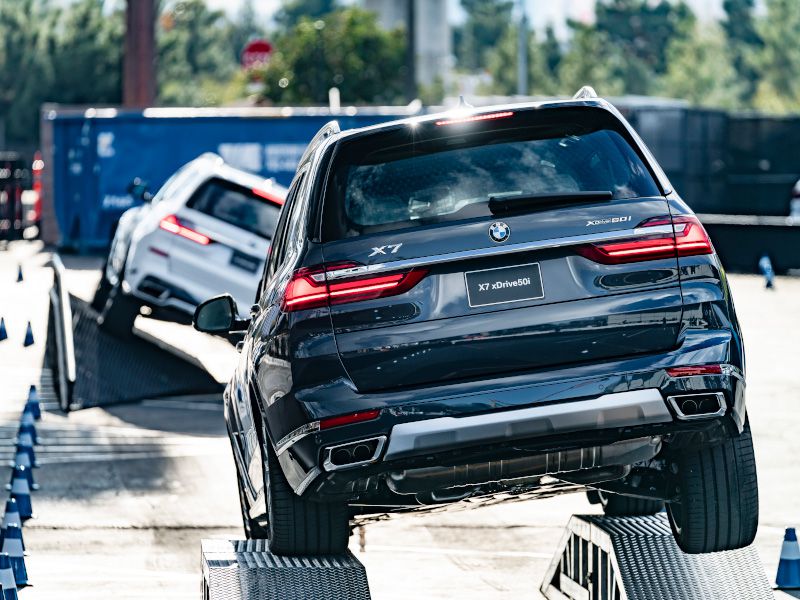
AutoWeb 2019 CES BMW X7 Articulation Display ・ Photo by BMW
BMW versus Mercedes-Benz — an eternal struggle exists between the two premium German automotive brands. A new battleground emerged with the release of the 2019 BMW X7, a full-size three-row SUV that competes directly with the 2019 Mercedes-Benz GLS, which debuted as the GL in 2006.
BMW’s hard-earned reputation as a sporty brand contrasts with Mercedes-Benz’s deserved image as a premium conveyance, but in reality, each brand has more than its share of both fun-to-drive and luxury features. Both the X7 and GLS are aimed at the American consumer, and each is built in the United States — the X7 in South Carolina and the GLS in Alabama. Does the X7’s sportiness trump the GLS’s luxury, or vice versa? Overall, which is best: the 2019 BMW X7 or the 2019 Mercedes-Benz GLS?
Design
The 2019 BMW X7 wears a radical interpretation of the brand’s signature kidney grille that takes the form of a big, upright double-oval opening guarded by vertical chrome bars. Love it or hate it, it’s a bold statement. The rest of the vehicle is equally bold, with twin headlights flanking the grille and big wheel arches over standard 21-inch wheels (22-inch wheels are also available).
The 2019 Mercedes-Benz GLS is no less bold than the BMW, but it manages to temper its boldness with taste and elegance. A big grille is bisected by two chrome bars, with a sizeable Mercedes star emblem prominently mounted at its center. The body sides are given definition with a crisp horizontal character line below the door handles, and a neatly tucked tailgate follows up. Standard wheel sizes range from 19 to 21 inches, depending on the engine you pick.
: Mercedes-Benz GLS
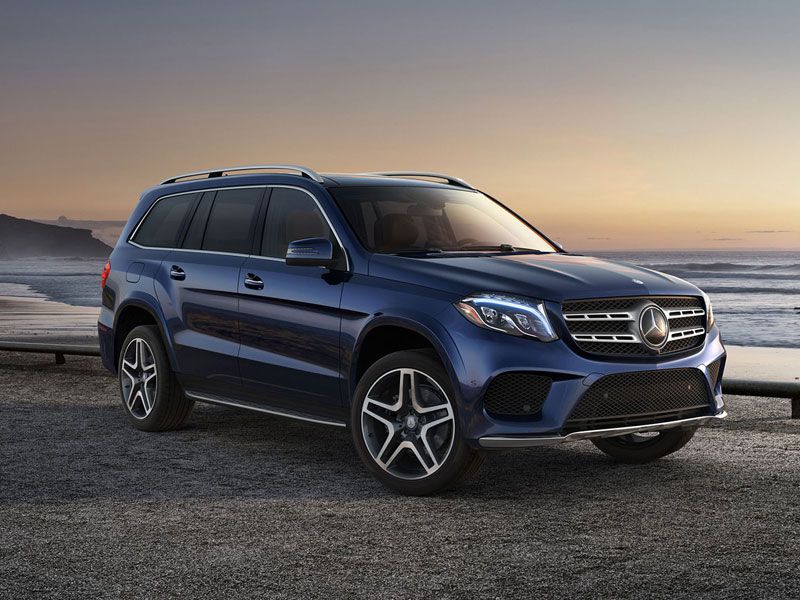
Photo by Mercedes-Benz
Engine
The X7 is available with a choice of two turbocharged gasoline engines: a 3.0-liter inline six-cylinder with 335 horsepower and 330 lb-ft of torque in the xDrive40i model, or a 4.4-liter V8 (456 hp/479 lb-ft of torque) in the xDrive50i. Fuel economy ratings are 20 mpg city/25 mpg highway/22 mpg combined for the xDrive40i and 15 mpg city/21 mpg highway/17 mpg combined for the xDrive50i.
The GLS can be ordered with a choice of three turbocharged gasoline engines: a 3.0-liter V6 (362 hp/369 lb-ft of torque) in the GLS 450; a 4.7-liter V8 (449 hp/516 lb-ft of torque) in the GLS 550; and a 5.5-liter V8 (577 hp/561 lb-ft of torque) in the GLS 63. Fuel economy ratings are 16 mpg city/22 mpg highway/18 mpg combined for the 450; 14 mpg city/19 mpg highway/16 mpg combined for the 550; and 13 mpg city/18 mpg highway/15 mpg combined for the 63. More choices and a monster engine option tip things for the GLS.
Mercedes-Benz GLS
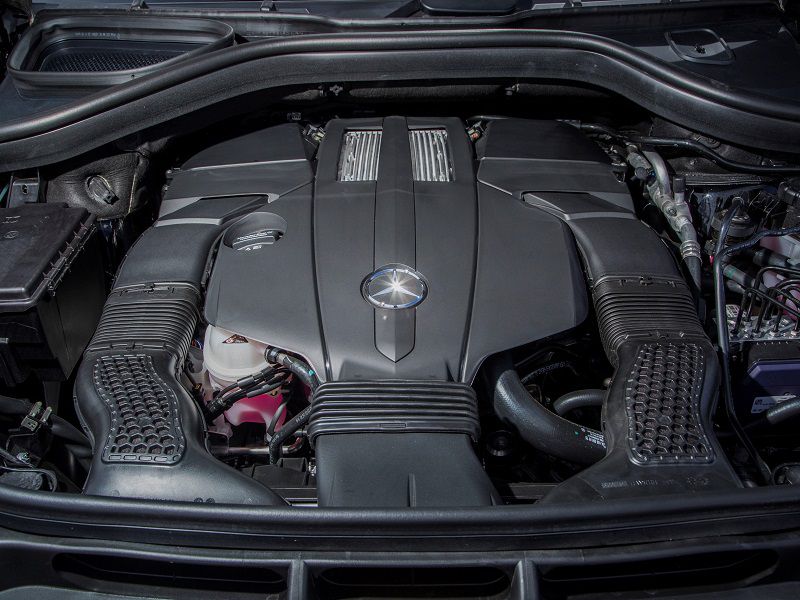
Photo by Mercedes-Benz
Transmission/Drivetrain
Both the X7 and the GLS come with standard all-wheel drive. BMW’s system is xDrive, a rear-biased setup said to respond to a more sporting style of driving. An electronically controlled rear differential is available with the Dynamic Handling Package and the Off-Road Package in xDrive50i models. The GLS uses 4MATIC, a four-wheel drive system designed to “empower each wheel individually as conditions change.”
Both X7 variants use eight-speed automatic transmissions, similar units with slightly different gear ratios matched with their respective engines. GLS 450 and 550 use nine-speed automatic transmissions, while GLS 63 uses a seven-speed automatic.
Tie
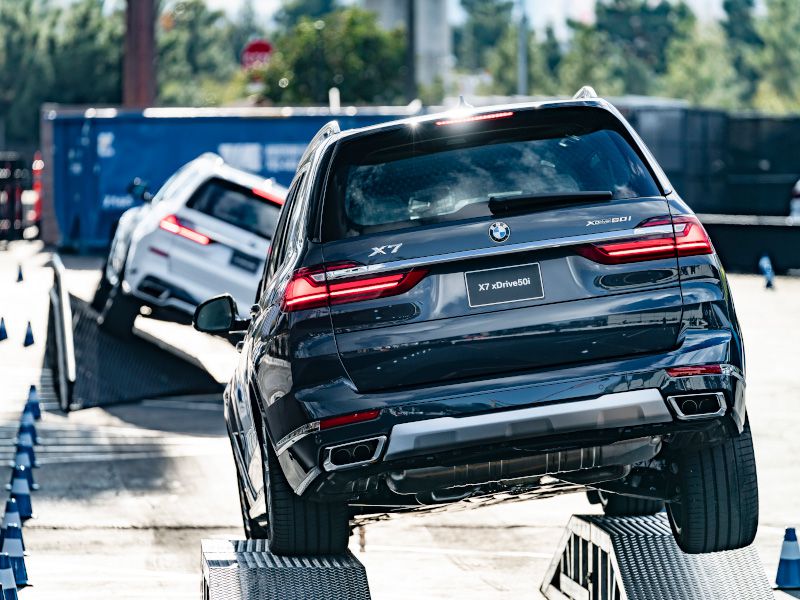
Photo by BMW
Luxury/Amenities
The 2019 BMW X7 and 2019 Mercedes-Benz GLS are each the flagships of their brands’ SUV lineups, and as such, serve as showcases for what the lineups have to offer. And when it comes to available luxury features, the lists are long and sumptuous.
For example, the X7 can be ordered with black SenasaTec or a choice of nine premium leather interiors. A leather dashboard plus glass controls for the start/stop button, gear shift lever, iDrive controller, and radio volume knob are available, as well as Panoramic Sky Lounge LED Roof and ventilated front massage seats. GLS luxury options include an air ionization system, piano black lacquer or a variety of wood trims, five interior color concepts, diamond quilting, brushed stainless steel sport pedals with rubber studs, and more.
Tie
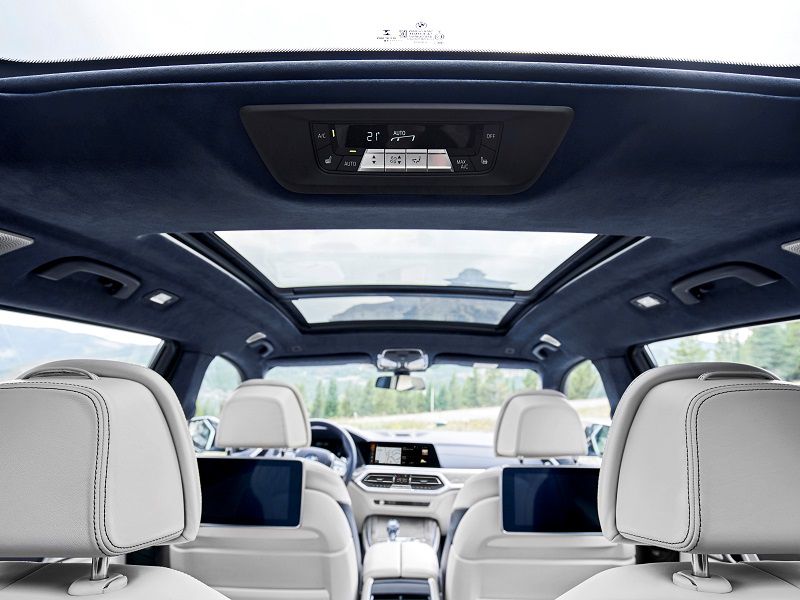
Photo by BMW
Cargo/Towing
The 2019 Mercedes-Benz GLS is rated to tow up to 7,500 lbs, and can carry a payload of up to 1,798 lbs, proving that the “U” in SUV still stands for “Utility.” The BMW X7 is not far behind, with a 5,950-lb tow rating with a third-party hitch or 7,500 lbs with a factory hitch, and a payload of up to 1,202 lbs.
The GLS comes out ahead in terms of cargo space. It can handle 16.0 cubic feet of luggage behind its third row, 49.4 cubic feet behind its second row, and 93.8 cubic feet of cargo behind its front row of seats. X7 buyers will have to squeeze luggage into 12.8 cubic feet behind the third row, and they receive 48.4 cubic feet behind the second row and 90.4 cubic feet behind the front row.
Mercedes-Benz GLS
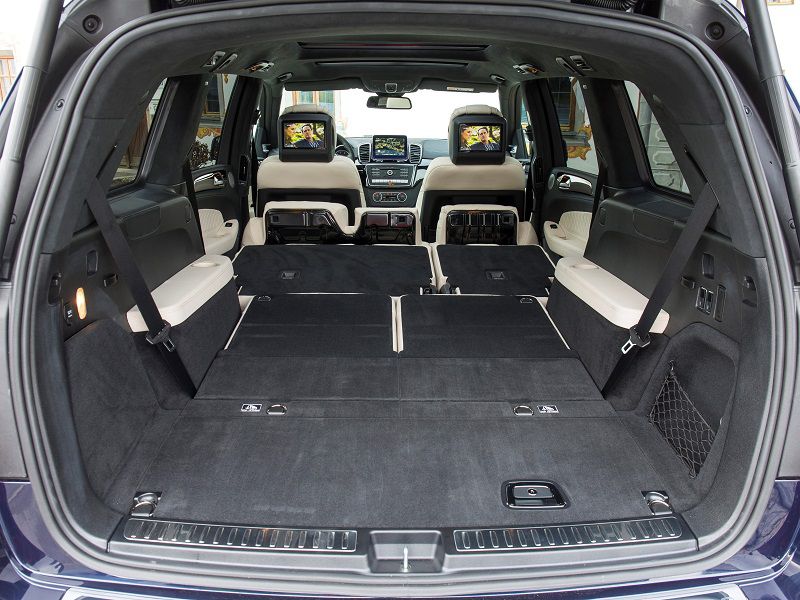
Photo by Mercedes-Benz
Infotainment/Technology
Mercedes-Benz’s available COMAND system has undergone its own evolution. It uses an 8-inch central screen to unite entertainment, navigation, driving systems, and vehicle settings via a touchpad controller on the center console. Unlimited-data Wi-Fi is available, as are a choice of two premium audio systems, one from Harman Kardon, and one from Bang & Olufsen.
BMW’s iDrive has come a long way since its debut in the 7 Series in 2001. No longer glitchy and complicated with nested menus, iDrive in the X7 is straightforward, intuitive, and relatively easy to use. A new layer, the BMW Intelligent Personal Assistant, adds a Siri-like interface that responds to voice commands, learns routines and habits, and can take action based on those learnings. BMW Digital Key can use the owner’s smartphone to operate the vehicle. Onboard software can be updated over the air, without the need for a dealer visit. This feature alone wins the day for the X7.
BMW X7
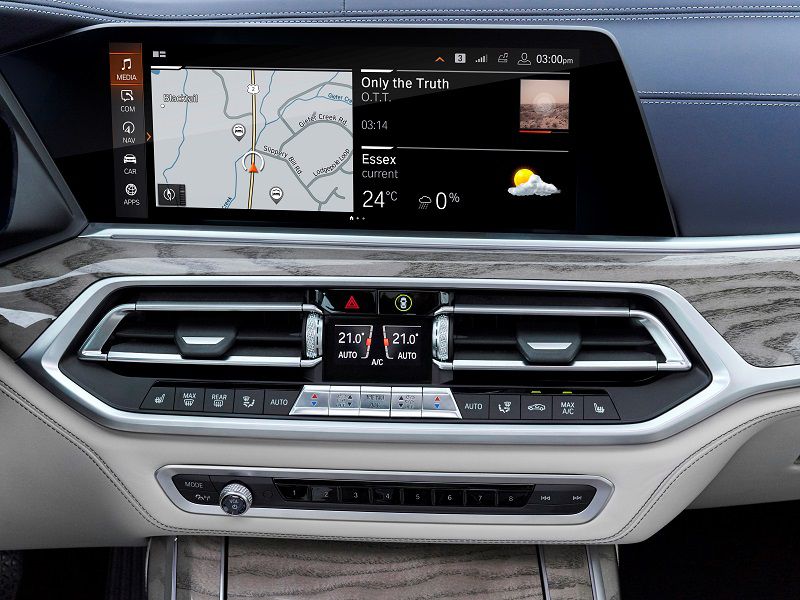
Photo by BMW
Safety/Driver Assistance
The 2019 Mercedes-Benz GLS benefits from the company's history of innovation and leadership in safety systems. Beyond the expected antilock brakes, electronic stability control, traction control, and rearview camera, the GLS gets standard Attention Assist; Trailer Stability Assist; PRE-SAFE, which prepares the vehicle and cabin in the event of an imminent collision; and Mercedes-Benz Emergency Call. Available active driver assistance features include radar cruise control, steering assist, LED headlamps with high-beam assist, blind-spot assist, lane keeping assist, brake assist with cross-traffic function, speed limit assist, parking assist, and more.
The X7 brings a good list of standard safety and driver-assistance features, too, including blind spot detection, a lane-departure warning, a rear collision warning, front collision warning with pedestrian and bicyclist detection, a rear cross-traffic alert, and a speed limit warning. Optional features ramp up, with driver alertness monitoring, automatic lane change, and Evasion Aid. A head-up display is also available.
Tie

Photo by Mercedes-Benz
Driving Experience
Each of these two three-row luxury SUVs weighs in at over 5,300 lbs. When you get that kind of mass into motion in a straight line with a powerful engine, slowing down and changing direction becomes a challenge to chassis, suspension, and brake systems.
The X7 attacks this challenge with two-axle air suspension with electronic adjustment for each individual wheel, and automatic ride height adjustment. The GLS uses a multi-link system both front and rear, with available air suspension. Both vehicle’s solutions work well, considering the physics of motion working against them. The GLS is the more agile of the two vehicles, and it also delivers a serene ride on the highway — ideal for long road trips.
Mercedes-Benz GLS

Photo by Mercedes-Benz
Pricing
The 2019 Mercedes-Benz GLS 450 4MATIC SUV starts at $70,150. The GLS 550 starts at $95,750, and the Mercedes-AMG GLS 63 starts at $126,150. As befits a flagship vehicle, a wide array of options and packages are available to upgrade and personalize the GLS.
The 2019 BMW X7 xDrive40i starts at $73,900, and the X7 xDrive50i starts at $92,600. As with the GLS, you can pile on the options for additional luxury, appearance, function, and personalization. The slightly lower bottom line leans toward the X7 as the leader in this category.
: BMW X7
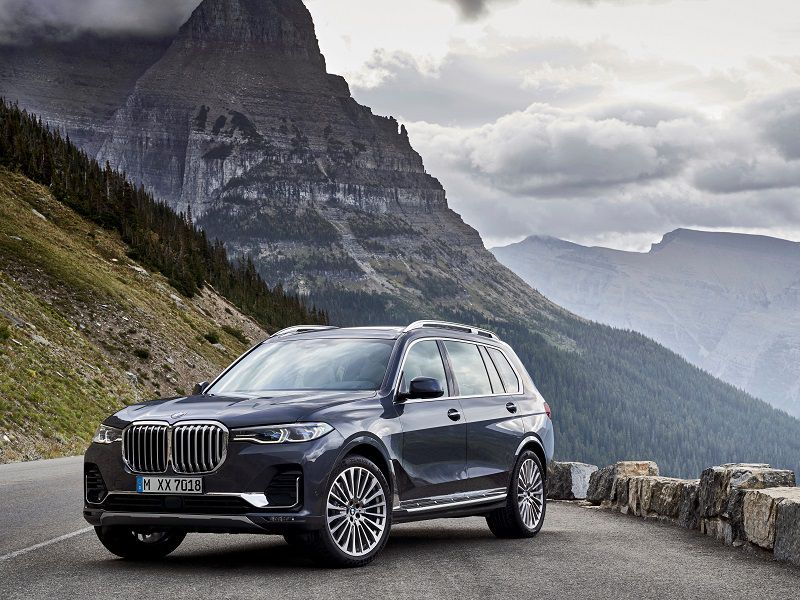
Photo by BMW
Recommendations
If you’re trying to decide between the 2019 BMW X7 and 2019 Mercedes-Benz GLS, you owe it to yourself to look at a few of the other three-row luxury SUV competitors. Take a drive in the big domestic choices — the Cadillac Escalade and Lincoln Navigator — for a different take on the formula. Check out the Infiniti QX80, Lexus LX, and Acura MDX to see how the Japanese makers view the equation. And don’t ignore the new Audi Q8, which may surprise you.
Our decision between the two contenders comes down to a rather shallow, yet crucial differentiator: appearance. That ungainly grille on the new X7 is not going to age well. It is bold and it is brave, but the GLS is simply more elegant and timeless. And with two vehicles that are so closely matched in other ways, that’s enough to declare a winner.
Mercedes-Benz GLS
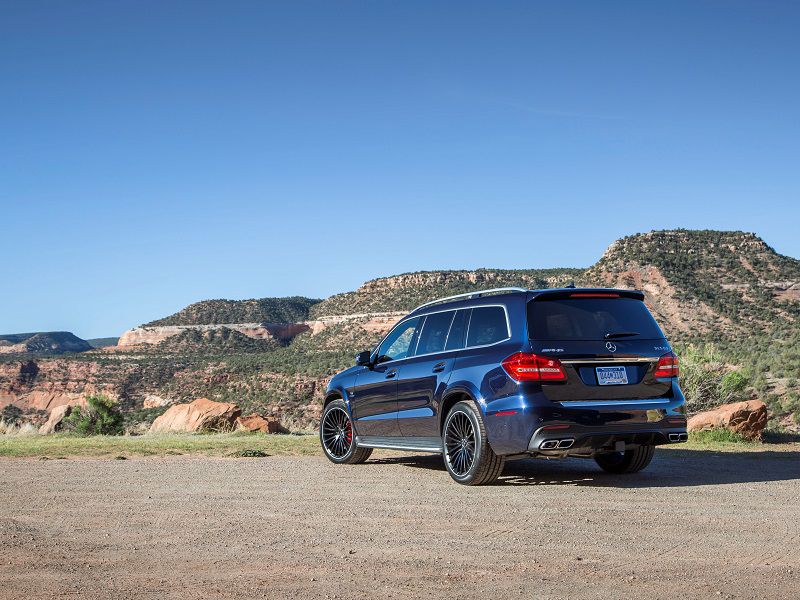
Photo by Mercedes-AMG